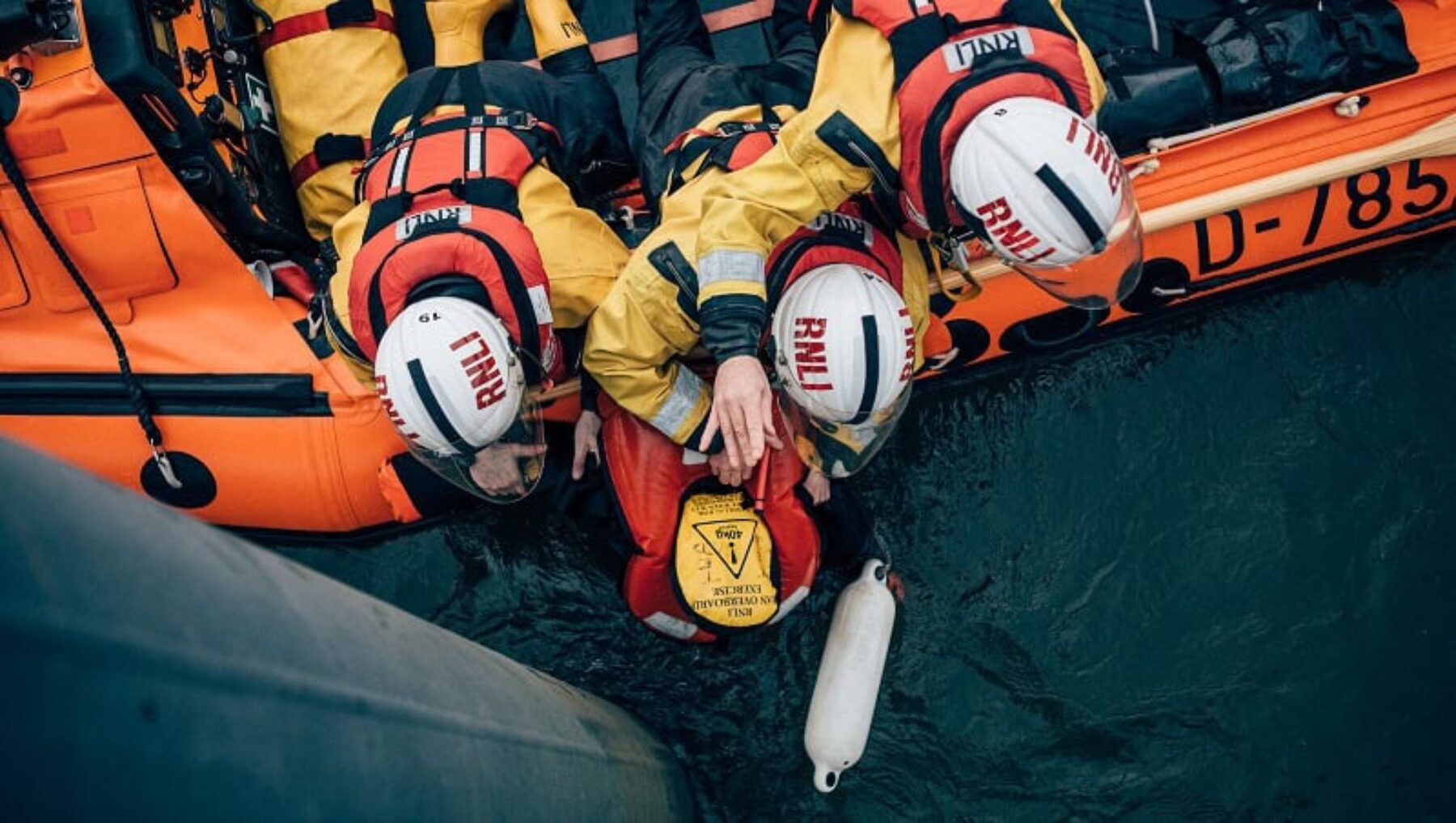Safety on the river Thames is in the hands of volunteers like Matt Allchurch. When the Royal National Lifeboat Institute (RNLI) needs him, he swaps his day job as an architect for a shift at Teddington: the highest tidal point on London's famous waters
10.00 am: Alarm
The pager generally goes off when I’m in my office. We get between 60 and 80 calls per year; more than one a week. I could be on the phone, sketching a design or in a meeting, I just have to drop my things and go. We need to be at the station in three minutes and on the scene within 15 minutes. Your adrenaline gets going, your training kicks in and you feel confident, but you never know what you are going to find.
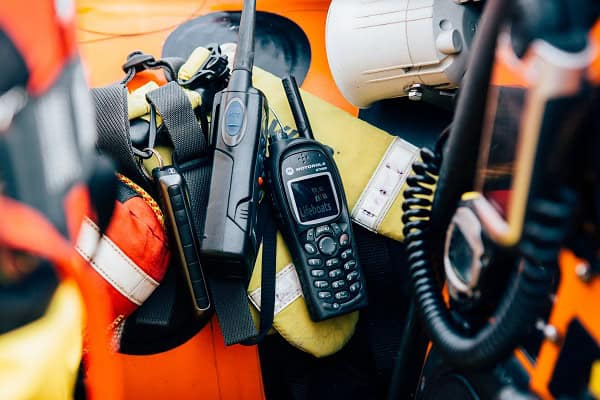
10.03 am: Change
I unlock the station and run through to the kit room to get changed. The phone rings, I pick it up to get the brief. “Person in the water at Kingston Bridge” might be all you hear at that stage. We put on thermal gear, a dry suit, lifejacket and helmet.
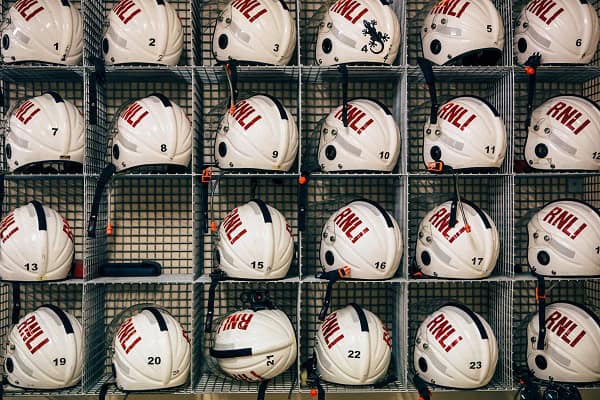
10.05 am: Launch
Ideally there are five of us at this point. Three go on the boat, one drives the tractor and there’s one banksman on the shore. One person is on the radio and speaks to the coastguard to get more instructions as we head to the scene. Police might be on the way or there may be a helicopter to help search. If it’s upstream we need to go through the lock; we phone the lock keeper to let us through.
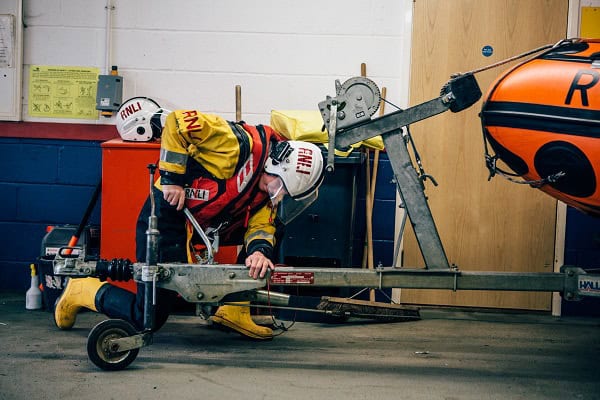
11.00 am: Return
Usually, from first call to dealing with the situation on the scene and heading back to the station takes around an hour. We have to go back at normal speed, which is five knots, as opposed to the 25 knots we can do on the way with flashing lights and sirens. Once back, we have to lodge a full report to the coastguards. Then we check the boats and the gear.
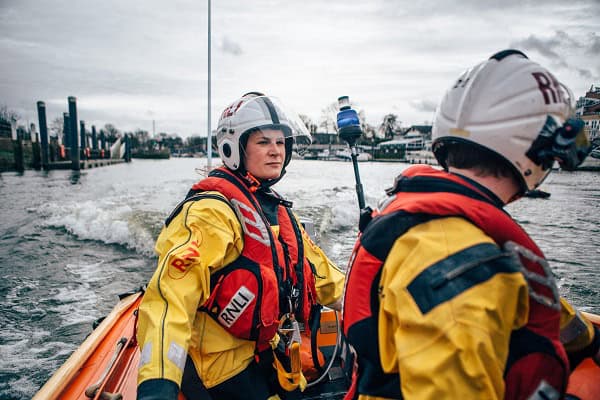
RNLI Teddington volunteers Manon Jones (left) and Harry Eaton scan the water for casualties en route to a rehearsed emergency recovery
12.30 pm: Work
Once we are done, everyone heads back to their day jobs. We’re all volunteers, but the training we receive is second to none; from boat handling to casualty care. I grab some lunch on the return to my office. I switch back to creating concept sketches and catching up with clients. They mostly know what I do and are understanding, they encourage it.
When people think of lifeguards, they think of the coast, fishing and sailing, but we are in a densely populated urban setting
7.00 pm: Training
After work, I head back to the station to host a training session around an emergency scenario. On the tidal Thames, there are strong currents and white waters where boats can get caught. We sketch a situation where a 200-person passenger boat breaks down and there are multiple injuries. We set the whole thing up and set off the pagers for the crew to respond as they would in real time. There are monitors on board and we have a full debriefing exercise afterwards. I then run another volunteer session on using the radio equipment.
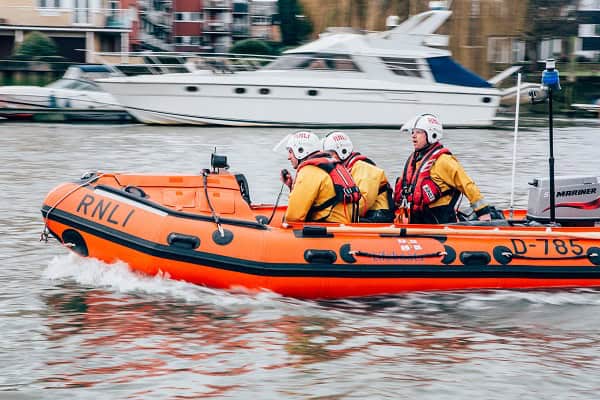
9.00 pm: Reflecting
When people think of lifeguards, they think of the coast, fishing and sailing, but we’re in a densely populated urban setting. The other day we had a man who had fallen into the river and was hypothermic before we got to him. We gave him oxygen and took him to shore where he was picked up by the ambulance. We’ve also had people have heart attacks on the towpath, where there are no roads so emergency services can’t get through. If someone has gone missing, we help with searches on the river. The crew is brilliant – we’re good mates. It’s a big part of my life.
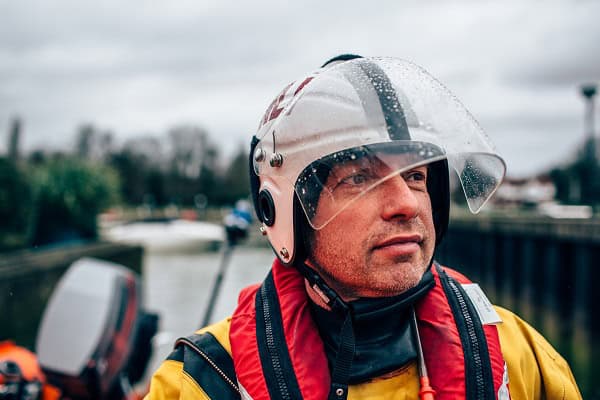
Matt Allchurch, volunteer at Teddington lifeboat station.
Photography by Alexander Walker
Main image: RNLI Teddington volunteers act quickly during a man overboard scenario in a training excercise on the tidal Thames
